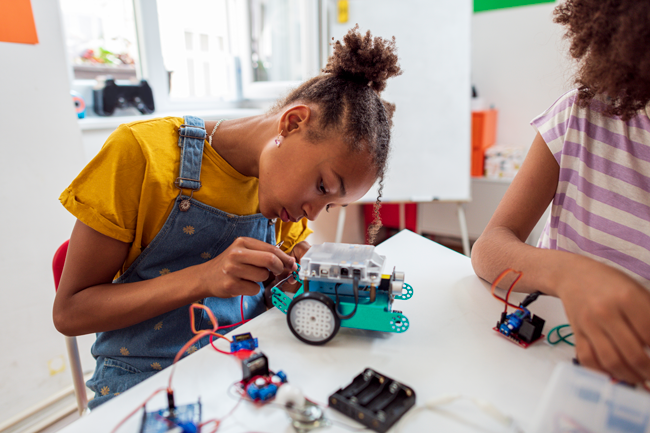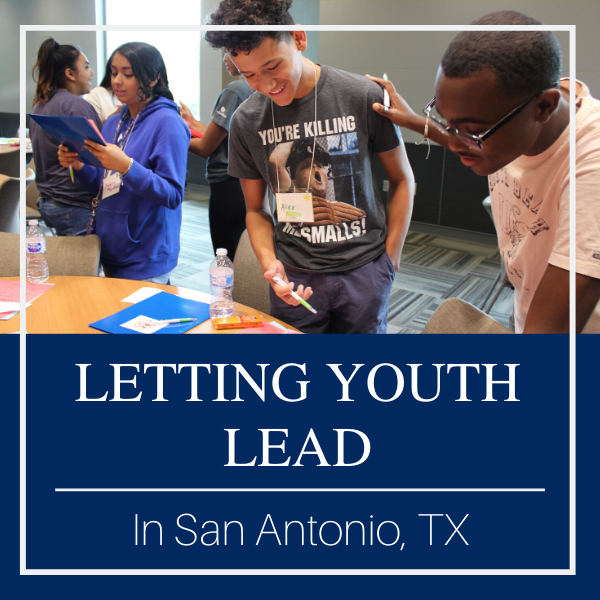Blog
Access to Quality Youth Programs and the Role They Play in Positive Youth Development
High-quality youth programs are a foundation for success for young people, allowing them to discover and build on their strengths and identities.
They foster positive youth development in myriad ways, creating spaces where young people are known, seen, and valued.
In particular, opportunities to participate in the arts, sports, and conservation activities have been shown to foster the positive youth development that helps young people thrive. However, not every young person has access to these types of programs.
Fostering Positive Youth Development
Positive youth development is an approach that ensures that young people are supported to reach their full potential. The adults in young people’s lives—educators, caregivers, mentors, and youth workers in school-based and afterschool programs—have an important role to play in supporting young people. These adults have the opportunity to promote a number of positive developmental outcomes by empowering youth to build skills and assets that strengthen their academic success, health, social-emotional competencies, and civic engagement as they grow into young adults. High-quality, youth-serving community programs are an incredibly valuable mechanism for adults to provide opportunities for positive youth development.
But what makes a high-quality program? Studies show, and researchers and practitioners agree, that quality programs can be distilled down to three fundamental components: promote developmental relationships; enable youth to pursue their deep, personal interests and “sparks”; and provide opportunities for youth empowerment and decision-making. A national study of 15-year-olds concluded that while 68% of youth said they participated in out-of-school-time programs, only 35% were high-quality programs that emphasized those three components.
The most fortunate young people often engage in several different types of high-quality youth programs ranging from sports to the arts to clubs. This is notable because youth with deeper, more meaningful involvement in activities and programs often enjoy even more significant positive outcomes.
The Search Institute report A Comparison of Contexts: How the Performing Arts, Sports, and Nature Conservation Foster Positive Youth Development examined three youth programs—Disney Musicals in Schools (musical theater), Portland Tennis & Education (sports), and the Student Conservation Association (nature conservation)—and uncovered five themes that help them stand apart.
Three Exemplary Youth Programs
As part of our work with several youth-serving programs, we considered how high-quality programs in the performing arts, sports, and nature conservation encourage positive youth development. These programs offer three shared opportunities: using the whole body to physically work toward a shared goal, being vulnerable and stretching beyond comfort zones, and transcending the self in pursuit of a larger purpose. The three following programs are examples that provide these opportunities and embody the five themes that make a high-quality program.
Disney Musicals in Schools
Disney Musicals in Schools (DMIS) is a program designed to bring musical theater to under-resourced public elementary schools. Over 17 weeks, students come together to produce a highly interactive and engaging performance of a Disney KIDS production. Shows like The Jungle Book, Aladdin, The Lion King, and others are used to engage students, teachers, families, and the community in the arts. It is free for students to participate, and schools are provided graduated levels of financial and professional development support via a local arts organization and The Walt Disney Company to carry out and sustain musical theater in their schools. To date, DMIS has worked with 529 schools serving more than 60,000 students.
Portland Tennis & Education
Portland Tennis & Education (PT&E) is part of the USTA Foundation’s National Junior Tennis & Learning program, which was created by tennis legend and civil rights activist Arthur Ashe. PT&E has a special focus on serving about 75 youth at a time in their year-round and summer programs. Over the last 25 years, PT&E has created opportunities for more than 16,000 underserved Portland youth to thrive through activities such as one-time events and year-round academics, athletics, life skills, and community support. Program participants—referred to as “scholar-athletes”—come from low-income, Hispanic immigrant households residing in North Portland. The program goal is to ensure that every student involved in their program graduates from high school with the opportunity and tools to pursue the post-secondary path of their choosing.
Student Conservation Association
The Student Conservation Association (SCA) seeks to build the next generation of conservation leaders by engaging young people in hands-on service to the land through internships with stipends. The organization is a national leader in preparing high school-age youth and young adults for a lifetime of conservation service, with more than 100,000 alumni across the country. Members serve in either year-round programs or summer programs that last two weeks to two months. Young people work in parks, public lands, and urban green spaces to make improvements and learn conservation and sustainability practices. SCA teaches them how to plan, enact, and lead, all while making a tangible impact in conservation.
What did we learn from our in-depth look at these youth-serving programs?
5 Themes of Exemplary Youth Programs
1. Investing in Developmental Relationships
Developmental relationships that young people experience with other youth and adults are the core of effective youth programs. For young people to experience developmental relationships, organizations need to be intentional, equitable, and inclusive. They need to provide training, set up structures, and support adults in building these relationships with all young people.
2. Creating Opportunities for Peers to Connect Through a Shared Goal
When young people have group experiences with their peers where they feel connected and included, young people of different backgrounds learn to work together.
3. Embedding Voluntary and Youth-Initiated Tasks Within Nonvoluntary Activities
It is important to find ways to give youth a voice and a say. Youth-initiated activities are opportunities for young people to feel capable and competent.
4. Integrating Authentic Learning Opportunities that Young People Care About
Authentic learning opportunities that align with youth interests help young people make real-world connections. This results in young people being willing to learn new skills that are transferable to other areas of their lives.
5. Providing Safe Opportunities for Young People to Explore New Interests and Take Risks
When young people feel physically and emotionally safe, they are better able to explore and try out new ideas and activities.
Access and Participation
As study after study has shown, investment in exemplary youth programs, like the three we highlighted, not only makes good financial sense; it also has a profound impact on the young people who participate. However, it’s important to acknowledge that many young people do not have opportunities to participate in these kinds of activities due to systemic barriers like racism, as well as the under-resourcing of schools and afterschool programs in areas of concentrated poverty, resulting in the exclusion and marginalization of people of color and youth from low-income backgrounds.
Additionally, when school, organization, and community budgets shrink, youth programs are often presented with considerable challenges to remaining active. Yet youth programs may be especially beneficial to young people right now due to the COVID-19 pandemic’s toll on learning and mental health. In fact, youth programs that occur outside of the school day provide essential support to families ranging from childcare to social-emotional learning and academic support. Therefore, when investments are made to support high-quality programs, entire families have the potential to be positively impacted, providing a foundation for beginning to address the negative impact of the pandemic on youth, families, and communities.
Although youth of color have historically had more limited access to high-quality youth programs (even before the pandemic), increasing access alone is unlikely to yield the same outcomes for youth of color. The opportunity is to go beyond access to improve the quality of youth programs overall and to integrate these understandings into other youth spaces like schools, ensuring that all youth benefit. High-quality youth programs can help create a generation with high character, a sense of purpose and opportunity, and the perseverance, work ethic, and social capital support to pursue their dreams and strengthen the fabric of their communities.
Learn more about what each of the three programs is doing to affect positive youth development. Review the full report, A Comparison of Contexts: How the Performing Arts, Sports, and Nature Conservation Foster Positive Youth Development.

.png)


